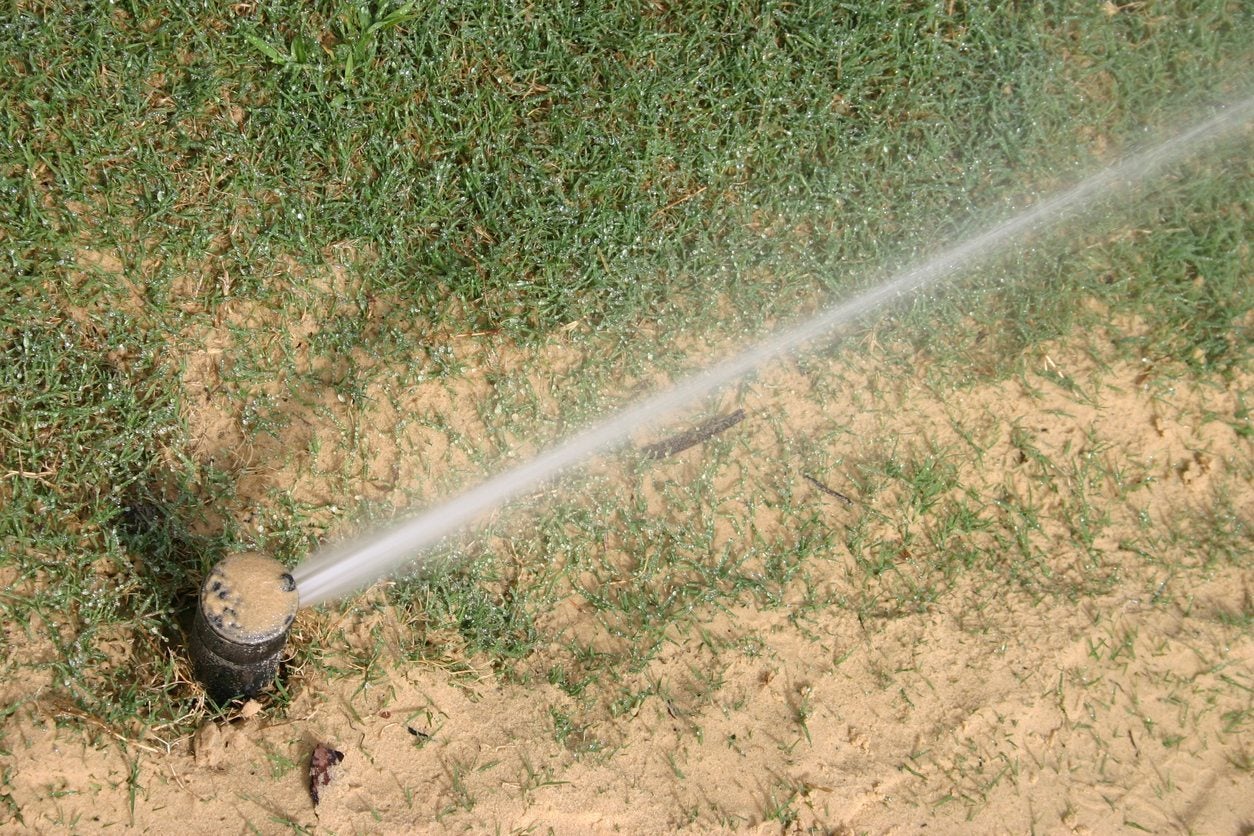Using Sand For Lawns: Is Sand Good For Lawns


It is a common practice on golf courses to add a thin layer of sand over the green. This practice is called top dressing, and it is a routine part of golf course maintenance to control thatch build up.
Sand is also used to level low spots in turf areas. Common lawn care questions we receive here at Gardening Know How include “Is sand good for lawns?” and “Should I put sand on my lawn?” Continue reading for the answers.
About Top Dressing with Sand
According to the Institute of Food and Agriculture at the University of Florida, top dressing home lawns with sand is more harmful than helpful. Experts agree that sand should only be used on a lawn to level low areas, cover exposed tree roots, and to fix heavy thatch build up. Even in those cases, it is recommended that you top dress with a rich, fine compost instead of sand.
Sand particles cannot retain any nutrients, so applying a layer of sand year after year to lawns actually causes lawns to lose their fertility. Golf courses are built on sandy soil and specialized turf grasses that can thrive in sandy conditions used on the greens.
The grass seed or sod that most people have in their lawn is not the same as the grass on golf courses. Golf courses also generally receive more maintenance than the common lawn, such as fertilizing and watering, which ultimately helps correct deficiencies created by the addition of sand.
Should I Put Sand on My Lawn?
A common mistake that many homeowners make when using sand for lawns is applying it too heavily or unevenly. This can leave unsightly globs of sand throughout the lawn while the grass beneath these heavy mounds of sand can literally be choked out.
When top dressing a lawn with any material, only a very thin layer should be spread evenly over the entire lawn. Any areas where it globs or mounds up should be corrected immediately. Many people also make the mistake of top dressing with sand to try to correct clay soil. This is actually the worst thing you can do, as adding sand to clay soil does not loosen up the soil; instead, it creates a cement-like effect. The best description I’ve ever read about clay soil particles is that they are like a deck of cards, spread out in a messy pile as they would be in a game of Go Fish.
Sign up for the Gardening Know How newsletter today and receive a free copy of our e-book "How to Grow Delicious Tomatoes".
If you were to pour water on a pile of cards, most of it would run right off the flat cards and not penetrate into the pile. Clay soil particles are flat and card-like. They lay on top of one another making water unable to penetrate them. When you add larger, heavier sand particles to this scenario, it weighs down the clay particles, making them even more impenetrable by water and nutrients.
For this reason, it is especially important to not top dress clay soil with sand. Instead, use a rich, fine compost.

Darcy is a former contributor to Gardening Know How. She is a professional landscape designer and gardening writer with experience in plant sales. An avid gardener, Darcy has a passion for sharing practical tips to help others grow.